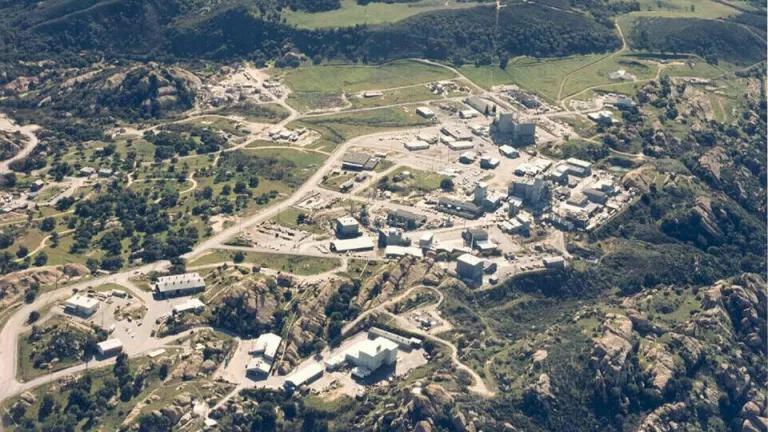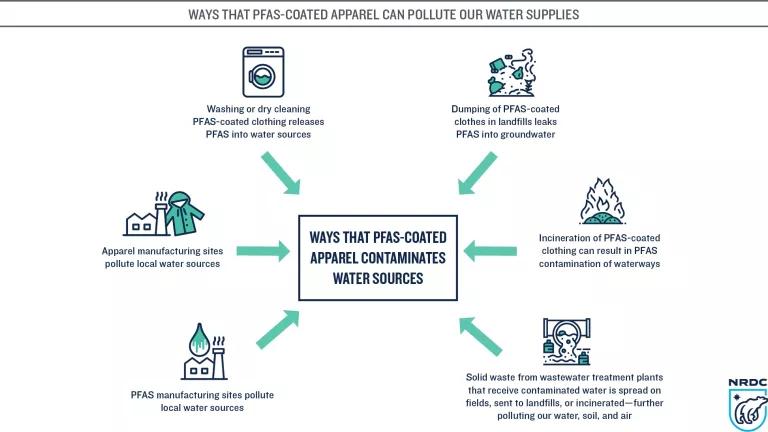Questions and Answers About the Santa Susana Field Lab
The Santa Susana Field Lab near Los Angeles is one of the most contaminated sites in California. Yet cleanup has barely begun. Here we answer common questions about the site and its cleanup, or lack thereof.

Hidden away in the sunny hills of Southern California is a dangerous secret: one of the most contaminated sites in the United States. The Santa Susana Field Laboratory was once the site of testing rockets for space and nuclear reactors for energy. Decades of carelessness in carrying out these heavy industrial activities left acres of soil and water radioactively and chemically contaminated.
It’s amazing that, while everyone knows the names of Three Mile Island, Chernobyl, and Fukushima, so few people are familiar with Santa Susana—even though it experienced a partial nuclear meltdown in 1959 that scientists estimate released more radioactivity than the Three Mile Island accident. It’s well past time for this secret to be fully unearthed and, more vitally, remedied.
Here’s what you need to know:
1. What is the Santa Susana Field Laboratory?
The 2,800-acre Santa Susana Field Laboratory sits atop hills between the Simi and San Fernando valleys in California, just 30 miles northwest of downtown Los Angeles. The site was established in the 1940s as a remote field lab for rocket and nuclear reactor experimentation and other work too dangerous to conduct near populated areas. But the Los Angeles and Ventura communities expanded around the site, so what was once a sparsely inhabited area is now a community of 150,000 living within five miles of the site and 700,000 living within 10 miles.
Tens of thousands of rocket tests were conducted at Santa Susana, many with very toxic fuels, which produced massive airborne plumes of contaminants that extended substantial distances. In addition, thousands of the tests involved flushing the rocket engines after firing with trichloroethylene (TCE), a very hazardous, volatile organic compound. For decades, despite requirements to the contrary, radioactive and toxic chemical wastes were burned in open “burn pits.”
Santa Susana also housed 10 nuclear reactors, plutonium and uranium fuel fabrication facilities, numerous nuclear “critical facilities,” and a “hot lab,” wherein highly irradiated nuclear fuel from around the nation was cut apart. Poor environmental and safety practices resulted in radioactive fires at the hot lab and at least four of the reactors suffered significant accidents, including the 1959 partial nuclear meltdown. None of the reactors had a containment structure like modern reactors do to prevent radiological releases into the environment. And, in fact, radioactive materials were intentionally vented into the atmosphere to prevent the reactor from exploding, releasing nuclear radiation into the skies above Los Angeles. At the time, the Atomic Energy Commission kept the meltdown hidden from the public. Only in 1979, 20 years after the radioactive release, did watchdog group Committee to Bridge the Gap discover the secret hidden in archives.
The nearly 60 years of rocket and nuclear testing, disregard, and accidents that occurred at Santa Susana left their mark through numerous chemical and radioactive releases and spills on the site that resulted in contaminated buildings, soil, surface water, and groundwater.
2. Who is responsible for cleaning up the site?
The California Department of Toxic Substances Control (DTSC), an agency housed within the California Environmental Protection Agency (CalEPA), is primarily responsible for regulating and overseeing the cleanup of Santa Susana. The Los Angeles Regional Water Quality Control Board also regulates the site’s compliance with stormwater permits.
There are three legally responsible parties that are in charge of cleaning up the site, due to owning or using the land: the Boeing Company, the National Aeronautics and Space Administration (NASA), and U.S. Department of Energy (DOE). Boeing purchased almost all of the site—then called the Rocketdyne facility—from Rockwell International in the 1990s and, in addition to the land, inherited the liability for the cleanup. The DOE has some cleanup responsibility because its predecessor agency, the Atomic Energy Commission, leased part of the site to conduct its nuclear tests. The remainder of the site is owned by NASA, which used the land for its rocket testing.
3. What’s the cleanup plan?
In 2007, Boeing, the Department of Energy, and NASA all signed Consent Orders setting out standards for the cleanup with California. The Department of Energy and NASA signed a second Administrative Order on Consent with California in 2010 that provided more detail on the required cleanup, including a historic requirement to clean radiation in soil to a background standard.
There are several key components of the consent agreements:
- They are legally binding; the parties cannot unilaterally choose not to comply with any part of them.
- They give California the final authority over the cleanup standards and methods.
- And the deadline for full soil cleanup and implementation of the groundwater remedy was 2017.
4. What’s taking so long? Isn’t it dangerous?
Even though all of the responsible parties signed binding agreements with California that required cleanup to be done by 2017, the cleanup has barely begun. And the work that has been done has not lived up to standards.
Unfortunately, it’s not uncommon for large industrial cleanups like the one needed at Santa Susana to take a long time. These types of cleanups can be extremely complex and expensive, which leads to squabbles over just how much has to be cleaned up. Since signing the cleanup agreements, Boeing, NASA, and the DOE have all claimed there’s little danger from Santa Susana and have tried to walk back the cleanup agreements. This is even with decades of evidence of both on-site and off-site health impacts. Most recently, a study confirmed that the 2018 Woolsey fire, which began on the lab site, could spread site contaminants to distant, but widely spaced, locations.
The strangest thing in the case of Santa Susana, however, is that the regulator—California DTSC—has not been stringent enough. In 2021, DTSC wrote to Boeing offering to enter into “confidential mediation.” With the conclusion of the mediation, DTSC has agreed with Boeing to redefine the cleanup standard in a manner that NRDC and its colleagues believe weakens what will ultimately be the cleanup requirements at the site, thus leaving the majority of the contaminated soil not cleaned up, and local and future residents at permanent risk to exposure. It’s a complicated matter and DTSC disputes that it has fundamentally weakened what will be required. We are unpersuaded at this time and will use every opportunity to have DTSC address this claim going forward.
5. What’s next?
Two things need to happen before final cleanup work can begin. First, DTSC needs to finalize a Programmatic Environmental Impact Statement, and second, DTSC needs to approve risk assessments. In these reports, DTSC will reveal if it has decided to do its job of telling the responsible parties that Santa Susana needs to be fully cleaned up. The agency is planning to publish the Programmatic Environmental Impact Statement in the coming months.
And what happens at Santa Susana will affect more than just the local community. This case affects nuclear contamination, hazardous waste cleanup, and public health nationwide. If those responsible for a site like Santa Susana—with its long documented history of nuclear accidents and careless releases—are allowed to walk away from the cleanup, it will happen anywhere. We need a precedent to safeguard public health nationwide to be established here and now.
All eyes are on California DTSC to make its next move.



